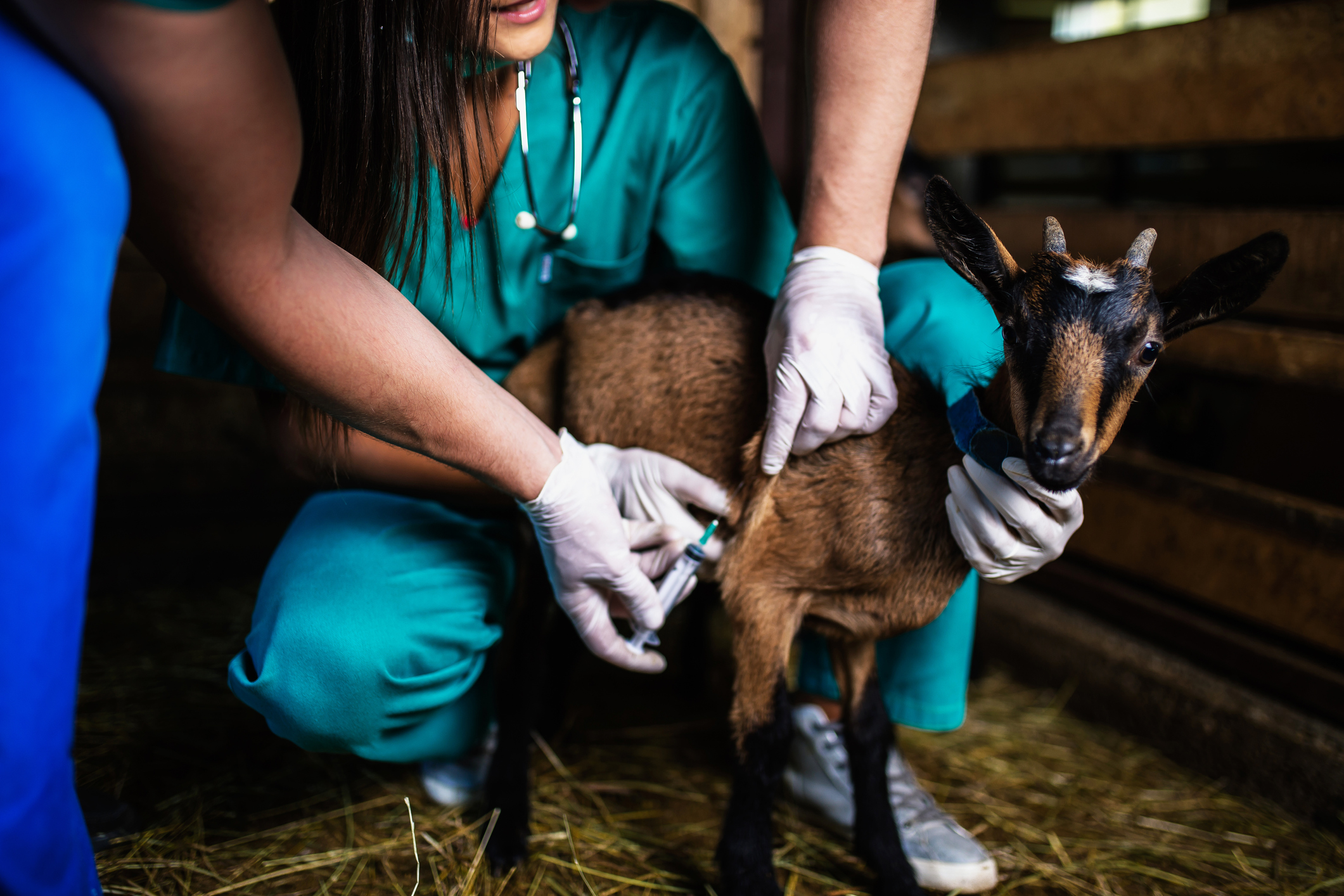The World Organisation for Animal Health (WOAH)’s new AMU Report analysing antimicrobial use on 71% of the world’s animal biomass, reveals a declining trend of 5%. This reduction in antimicrobial use is encouraging, but more work is needed, both in improving reporting and compliance with international standards.
Over the last few decades, antimicrobials have been used in many non-essential ways, such as for promoting animal growth. Scientific evidence shows that irresponsible use drive to the development and spread of antimicrobial resistance (AMR), a major threat to the health of animals and humans alike, with significant economic consequences.
Measuring the quantity of antimicrobials administered to animals is key to understanding usage patterns and trends, ensuring compliance with international standards on responsible use, and eventually avoiding health issues, deaths, and economic losses. Recognising this need, WOAH has released its ninth Antimicrobial Agents Intended for Use in Animals Report (AMU Report). Analysing data covering 71% of animal biomass, the report reveals a 5% reduction between 2020 and 2022 – the year the most complete set of data was recorded.
Health experts and decision makers are well aware of the risks connected to AMR and much progress has been made to decrease their unnecessary use. In September 2024, Member States of the United Nations undersigned the Political Declaration of the High-level Meeting on Antimicrobial Resistance. As part of this official commitment, countries agreed to work towards reducing the global use of antimicrobials in animal health and agriculture. This involves investing in the prevention and control of infections, while also encouraging all countries to report, through existing global surveillance systems, high-quality surveillance data on antimicrobial resistance and use.
ANIMUSE, WOAH’s global database on antimicrobial use, was designed to collect and publicly share global and regional data on antimicrobial use provided by national animal health authorities.
The ninth AMU Report, whose findings are also featured in the inaugural State of the World’s Animal Health, represents a 6% increase of animal biomass compared to the previous edition – a notable expansion in coverage. The animal biomass is an internationally recognised indicator calculated to better analyse and interpret antimicrobial use trends.
Used as a denominator for the antimicrobial quantities reported by the different nations, it allowed WOAH to estimate that, between 2020 and 2022, the quantity of antimicrobials intended for use in animals decreased from 102 mg to 97 mg of antimicrobial agents per kg of animal biomass, corresponding to the 5% reduction already mentioned.
The report demonstrates the consistent participation of 157 countries in WOAH’s annual survey, 111 of which providing quantitative data on antimicrobial use. Thanks to this participation, this year’s AMU Report provides new interesting insights. For the first time it has been possible to elaborate a separate analysis of data from the Middle East; additionally, the report presents a comparison between terrestrial and aquatic food-producing animals. Coverage reached 47% of terrestrial animal biomass and 64% of aquatic, enhancing the granularity of the analysis and therefore the understanding of antimicrobial use globally.
The figure illustrates regional trends in antimicrobial use in animals across WOAH regions. All regions showed a reduction between 2020 and 2022, except the Middle East. The accompanying pie charts show the level of data coverage for each region during the same period, putting into perspective the representativeness of the trends.
Taking into consideration the data from 85 participants who consistently provided quantitative data for the period 2020 to 2022 – corresponding to 62% of the global animal biomass – the global 5% decrease in antimicrobial use is reflected in most of WOAH’s Regions. Africa, the Americas, Europe and Asia and the Pacific regions reported consistent reduction: -20%, -4%, -23% and –2% respectively, while the Middle East recorded a 43% increase. However, ANIMUSE experts noted that antimicrobial use in this region is the lowest among all, representing only 0.3% of the global biomass and 0.04% of the global quantities reported.
WOAH’s international standards, guidelines and recommendations do not recognise the use of antimicrobials for growth promotion purposes as responsible use and encourages countries to completely phase out this practice. Although the report shows that 71% of participants to the survey have stopped this method, 22% continue to do so. Among respondents using growth promoters in animals, 7% reported using at least one antimicrobial classified as highest priority critically important to human health, such as colistin, enrofloxacin and fosfomycin.
The use of antimicrobials to boost animal productivity rather than treat, control or prevent infections is highly dangerous, as it can contribute to AMR. This occurs when microbes adapt and become resistant to treatment, making infections harder – or even impossible – to cure. As a result, when animals or humans genuinely need antimicrobials for infections, the treatment may no longer be effective due to this resistance.
In 2022, the year of the data presented in the report, antimicrobial resistance was directly responsible for 1.15 million human deaths. Projections show that without action, drug-resistant bacteria could cause 38.5 million deaths in human between 2025 and 2050, reaching a 60% higher annual toll than today, with the human health burden heaviest among the elderly and in low- and middle-income countries.
For all these reasons, it is fundamental to act against antimicrobial resistance, starting now, by reducing the use of antimicrobials in animals, to guarantee improved welfare and health both to farmed animals and people. Coordinated and timely effort, developed with a One Health approach, is the only way to save lives and resources.
There are many ways to avoid unnecessary antimicrobial use. Proper animal husbandry and biosecurity are essential and should never be replaced by antimicrobials. Farmers and policymakers should prioritise prevention, especially through investment in vaccination as it can help to prevent diseases and reduces the need for antimicrobial treatments.
WOAH will remain at the forefront of the efforts to reduce AMR, working alongside its Members and advocating for well-resourced national surveillance systems. Collecting, sharing, and analysing data is essential to reducing antimicrobial use and making science-driven, evidence-based decisions for a healthier future.



